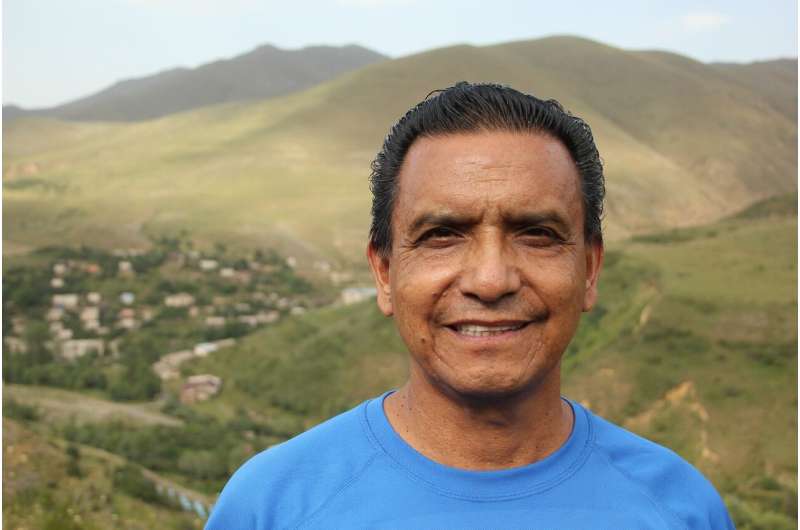
Hispanic Americans have died of COVID-19 at a disproportionately high rate compared to whites because of workplace exposure to the virus, a new study suggests.
It’s widely documented that Hispanics are overrepresented among workers in essential industries and occupations ranging from warehousing and grocery stores to health care and construction, much of which kept operating when most of the country shut down last spring.
The analysis of federal data showed that, considering their representation in the U.S. population, far higher percentages of Hispanics of working age—30 to 69 years old—have died of COVID-19 than whites in the same age groups. A separate look at case estimates showed a similar pattern of unequally high COVID-19 infection rates for Hispanics—meaning that the elevated deaths in the working-age Hispanic population is consistent with elevated exposure to the virus.
“There was no evidence before this paper that really demonstrated that the excess cases were precisely in these working age groups,” said Reanne Frank, professor of sociology at The Ohio State University and co-author of the study.
“Particularly for front-line and essential workers, among whom Hispanics are overrepresented, COVID-19 is an occupational disease that spreads at work. Hispanics were on the front lines and they bore a disproportionate cost.”
Identifying a link between essential work and a higher rate of COVID-19 deaths should lead to better workplace protections, said study co-author D. Phuong (Phoenix) Do, associate professor of public health policy and administration at the University of Wisconsin-Milwaukee.
“If we know the source of the spread, then we can tackle it head on,” she said. “This finding is applicable to any disease that is highly infectious. We can’t stop the economy—we’ve learned that. There has to be a way to protect the workers and enforce protection.”
All analyses were based on the most recent data as of Sept. 30, 2020. The research is published in the journal Demographic Research.
Because COVID-19 death rates are highest among older ages, the fact that a much higher percentage of Hispanics are in the younger age groups compared to whites meant that excess Hispanic deaths were initially masked. Centers for Disease Control and Prevention (CDC) age-adjusted data from 2020 showed that Hispanics constituted 19% of the population, but almost 41% of COVID-19 deaths.
When it became apparent that COVID-19 deaths were disproportionately high among minorities, commentators frequently suggested that unequal access to quality health care, higher levels of pre-existing conditions and multigenerational households were key causes, along with exposure as front-line workers.
At the time, however, “there wasn’t any case data to support this workplace vulnerability hypothesis, which to us seemed most compelling in trying to understand the excess deaths among Hispanics,” said Frank, also a faculty affiliate in Ohio State’s Institute for Population Research.
Using CDC death counts stratified by age within racial/ethnic groups, the researchers compared the proportion of COVID-19 deaths attributed to whites and Hispanics with each group’s relative population size. Nationally and in most states, in every range below age 75, Hispanic deaths were disproportionately high and deaths among whites were disproportionately low. One example from national data: Hispanics ages 35 to 44 and 55 to 64 experienced a higher-than-expected proportion of deaths of 15.4 and 8 percentage points, respectively. In contrast, whites in those same age groups faced mortality advantages of 23 and 17 percentage points, respectively.
Turning to CDC case surveillance data, the researchers found the same patterns at the county level. Overall and within each age group, whites were disproportionately underrepresented among COVID-19 cases, while Hispanics were overrepresented, with the greatest excess in cases among those of working age: 30 to 59.
Among the reported cases, Hispanics had fewer pre-existing health conditions than whites and there were no significant differences between working-age Hispanics and whites in the percentage of infections that resulted in death. Hence, the researchers said, the case data is not supportive of pre-existing comorbidities and/or lower-quality health care being driving factors in the excess Hispanic mortality.
“If case fatality rates are comparable across racial and ethnic groups, and they are, but we see big differences in the amount of death, which we do, then we have to focus on differential exposure,” Do said. “So what we see is that these two patterns are consistent with higher case burden being the driving factor of the higher mortality burden among Hispanics.
“The evidence does not support the other hypotheses. The data in this case supported the workplace exposure hypothesis but not unequal access to health care or unequal quality of care, not pre-existing conditions, and not multigenerational household exposure.”
The researchers said the patterns revealed in the data ideally will discourage what amounts to victim-blaming—attributing an unequally high rate of COVID-19 deaths among Hispanics to risks associated with individual health behaviors or living arrangements rather than their overrepresentation in the essential workforce, often in low-wage jobs.
Source: Read Full Article
